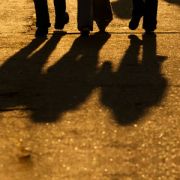Expert Analysis: Syria - an Unresolved Struggle
Syria: An Unresolved Struggle
by Eyal Zisser
TEL AVIV NOTES, Volume 7, Number 110
Moshe Dayan Center for Middle Eastern and African Studies

For two and a half years now, Syria has been awash in flames. What began as a limited protest by local farmers and laborers in outlying towns and villages has swelled into a broad popular uprising, and is now a bloody, full-fledged civil war. The struggle in Syria has increasingly taken on sectarian features. Moreover, this sectarianism has been tainted with a religious, jihadi element by Islamist groups within Syria, and by volunteers flooding the country from all over the Arab and Muslim world, eager to fight against Bashar al-Asad’s “heretical” Alawite regime, the ally of Shi‘i Iran and Hezbollah.
The way events have unfolded in Syria—a steady escalation in fighting, the regime’s progressive loss of control over state affairs, and the spreading of chaos throughout the country—is working against the Asad regime. The regime is akin to a severely wounded animal. It is becoming weaker in terms of morale as well as economically and even physically, as both its financial and human capital are being rapidly depleted. During the past two and a half years, the regime has lost control over large swaths of the country—60-75% of Syrian territory—and ultimately has found itself waging a battle for its survival against the rebels on the outskirts of Aleppo, Syria’s economic capital and second-largest city. The winds blowing in the region and internationally are filling the sails of the Syrian rebels. They appear more determined and closer than ever before to achieving their goal: to bring down the Syrian Ba‘ath regime and put an end to the Asad dynasty, which has ruled the country for 42 years.
The rebels have severely damaged the regime’s underpinnings, succeeded in paralyzing daily life across the country, and taken control of vast areas. In May 2013, the reported number of fatalities surpassed the one hundred thousand mark, and the number of persons who have been forced to leave their homes reached approximately 4.5 million, of which more than a million have left the country outright. The damage done to the country’s economic infrastructure is estimated at nearly $100 billion, ten times the annual Syrian GDP. Thus, it seems that most of the Asad dynasty’s achievements in Syria over the last forty years have gone down the drain.
Still, the regime in Damascus continues to survive. Indeed, despite the many eulogies for Bashar al-Asad, some observers have begun to once again raise the possibility of him attaining the upper hand in this bloody struggle. The regime has managed to maintain cohesion and unity among the pillars that it relies on for survival: the army, security forces, government institutions and the Ba‘ath party, notwithstanding the waves of defections among their ranks. More importantly, the regime still enjoys the support of important sectors of Syrian society, especially among the coalition of minorities that underpin its rule: the Alawite community as well as Druze, Christians and even some members of the Sunni community from the urban middle- and upper-classes. In addition, the regime enjoys the support of major players in the regional and international arenas, particularly Russia and Iran.
Ultimately, however, the Syrian regime’s survival thus far is due in no small measure to the failures of the rebels. First, the Syrian rebels and their supporters abroad have failed in their efforts to close ranks and establish political and military unity among the many political bodies as well as the armed military groups operating against the regime. The absence of a government in exile or even a single military leadership and headquarters is striking. What political and military institutions the rebels have established have only had a small effect on the course of events within Syria.
Second, the insurgents have not succeeded in extending their appeal beyond their existing base of support to the Syrian public at large. Especially evident is the failure to enlist the minority communities, which constitute about 40% of the country’s population, and particularly the Alawites, Druze, and Christians. Worse still, the rebels have been unable to garner support among the Sunni urban majority, who remained bystanders even as the revolution came to Aleppo and Damascus.
Third, the revolution’s morphing into violent armed struggle, including the terror attacks directed against the civilian population, has played into the regime’s hands, helping to deter many of the country’s silent majority from taking part in protest. In addition, the radical Islamic character of much of the rebel forces is pushing away many Syrians. Indeed, some of the rebel groups are devoid of any commitment or connection to the Syrian state, and instead promote an all-Islamist agenda.
Essentially, the Syrian rebels consist of armed irregulars, and have not formed into a regular army or even an organized militia. Their very diffusion throughout the four corners of the country render it extremely difficult for the regime to gain the upper hand against them. Nevertheless, they have thus far been unable to deliver a blow powerful enough to topple the regime. Thus, the war in Syria has become a war of attrition, characterized by mutual and ongoing bloodletting, without any clear signs of victory in the foreseeable future.
The regime’s strategy is focused on defending (1) Damascus and Aleppo, which constitute the core of the Syrian state; (2) the areas of Homs and Hama, located on the road that connects Aleppo and Damascus; and (3) the region from Homs and Hama to the coast, which is predominantly Alawite and the stronghold of the regime, and which also contains the ports—Tartous, Banias and Latakia—that are sources of essential aid and supplies. Concurrently, the regime is trying to maintain control over the border areas, primarily those with Lebanon and Jordan, hence the importance of the city of Dara’a (near Jordan) and, to a lesser extent (due to the distance from Damascus), the border areas with Turkey and Iraq.
A look at the map of Syria after two years of fighting presents the following picture: The regime has lost control of the border areas with Turkey and Iraq and partial control of the border areas with Jordan and Lebanon, which have largely fallen to the rebels. The border areas in the north are under the control of Syria’s long-suffering Kurdish minority, who are attempting to establish an autonomous regime. The Jazira region in the northeast, where much of Syria’s grain is grown and where important oil and gas fields and water reservoirs are located, is increasingly slipping away from the regime and into rebel hands, such as al-Raqqa, which was the first city to fall completely to the rebels. Third, Aleppo, the economic capital of Syria, is under partial rebel control, as is its rural surroundings and the adjacent region surrounding Idlib. Even the road connecting northern Syria to the south has been disrupted and is partly under the control of the rebels. Finally, the struggle for the capital, Damascus, is at its height as the regime has failed to dislodge the rebels from the outlying areas surrounding the city and from the Golan and Hauran regions, which are mostly under rebel control.
On the other hand, the Druze Mountain in the south and Alawite sector in the north, along with the latter’s adjacent coastal areas, are quiet. So too are portions of Damascus and Aleppo, a testament to the Syrian bourgeoisie’s long-standing acceptance, and even alliance with, the Asad dynasty. The regime continues to rely on the support of the army, security forces and various government institutions that remain firmly behind it despite the heavy blows it has sustained.
In sum, it appears that the struggle in Syria will continue for the foreseeable future, as the Syrian regime is fighting for survival, the Syrian army has not yet crumbled, and various government mechanisms are still functioning. The regime enjoys the support of minority communities and also of parts of the Sunni community, especially residents of large cities. The question remains whether the rebels will gain the upper hand, or whether the regime will succeed in turning the tide in its favor, owing to the rebels’ inherent weaknesses, failure to unite ranks, and increasing fatigue and even despair.
Eyal Zisser is Dean of Humanities and a professor in the Department of Middle Eastern and African History at Tel Aviv University; he is also a senior research fellow at the Moshe Dayan Center for Middle Eastern and African Studies.
 TEL AVIV NOTES is an analytical update on current affairs in the Middle East, published by Tel Aviv University’s Moshe Dayan Center for Middle Eastern and African Studies, with the support of the V. Sorell Foundation.
TEL AVIV NOTES is an analytical update on current affairs in the Middle East, published by Tel Aviv University’s Moshe Dayan Center for Middle Eastern and African Studies, with the support of the V. Sorell Foundation.






